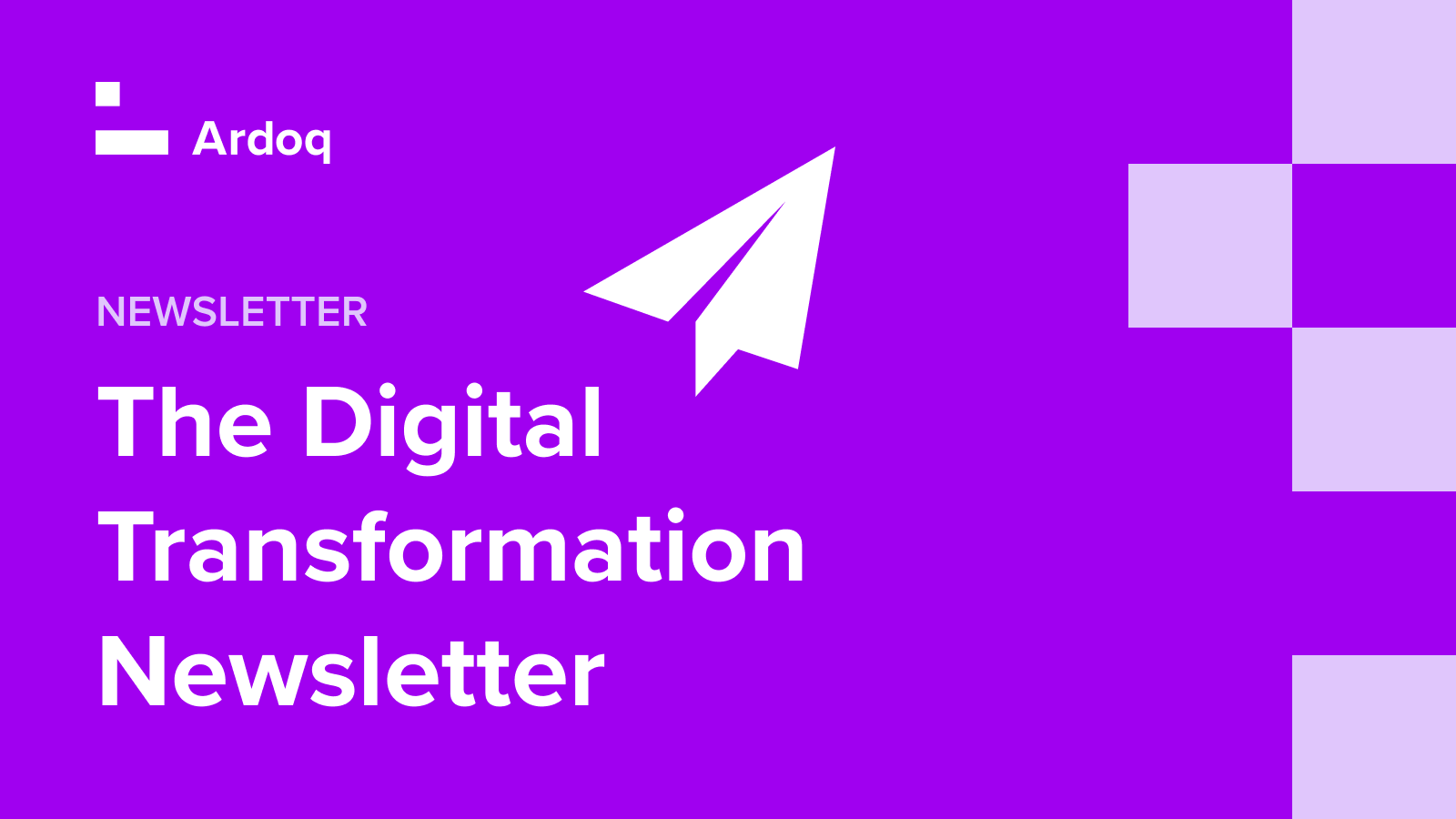Building a transformational roadmap would be easy - if people liked change. Most people don’t. If you could read minds in a meeting, you might hear people thinking loudly, “If the map looks alright, there’s no need to change it.” As an Enterprise Architect (EA), part of your job is helping people understand transformation is vital, especially when the business and IT landscape around us shifts and changes.
When working on transformation, it’s best to have a clear overview of where you are and where you’re going. With this understanding, you have a better chance of gaining executive buy-in and driving change as a strategic advisor for the C-level.
In a recent episode of Behind the Future, Mark Thomas, Consultant and Principal EA sat down with me, Henrik Holth. Mark gave his advice on building an enterprise transformation roadmap, outlining 5 clear stages of transformation. He also shared vital questions for each stage to help focus on what needs to be achieved.
“Some companies have the main goal of moving from place A to B, taking them from where they are now to a place that they want to be in the future. However, the best companies in the world are those in a continuous state of transformation.”
- Mark Thomas, Consultant, and Experienced Principal Enterprise Architect
1. Begin With a High-Level Strategy
As a consultant, Mark always starts with strategy. First, he looks into an organization's high-level goals, visions, and outcomes. It can be as simple as going to the corporation's website and looking at the strategy and goals. From there, he breaks everything down into the tangible deliverables needed to move them from their current state to the vision that the organization wants.
Mark recommends examining your current state first and using it to build your target state. Next, begin to draft a roadmap of moving through the stages. For example, your project might be a six-month project or years-long transformation work. Either way, this draft should be a starting point to achieve value during the transformation.
Questions to ask for developing value and strategy:
- What strategy do we have now to look at our current state?
- What strategy do we need to look at for our current state?
- What is good or bad in our current state and analysis?
Questions to consider on transformation:
- What do we want to transform? (Business processes, technology solutions, organizational structure or the organizational operating model itself)
- What do you want to achieve?
- What is the need of the organization?
- How will you get the buy-in from your senior stakeholders?
- What are the KPIs and targets you will manage for success and transformation value?
Timeline and monitoring are two additional points for shaping your strategy. It's more than delivering one thing; you need a holistic view of how the whole transformation fits together. Remember to consider:
- How long do you need between increments to reach your solution?
📖 If you’re digging into your business capabilities, here is a quick starter read on How to Understand What Your Business Capabilities Are.
2. Actively Engage the C-Suite
Once you’ve nailed down where you’re going, it’s time for one of the most vital steps: getting approval. First, check the stability of the organizational structure. For example, the C-Suite’s position in their life cycle impacts your buy-in. Mark explains, “I've been in some organizations where we get the buy-in, but the stakeholders are looking to the next step in their career. So when a new CFO level comes in, you have to do the work again.” However, with solid sponsorship from the senior stakeholders, you'll have people and resources going forwards.
“You have to get that buy-in from the C-Suite, and it’s a hard job to bring all of these people together. ”
Questions to explore for getting buy-in:
- What’s the best approach to getting buy-in from the senior stakeholders?
- What value is the transformation going to bring out?
- Where are stakeholders in their lifecycle? Remember, if they are looking at the next career step, they may leave, and you’ll have to get buy-in all over again with their replacement.
💡Read our Top 3 Tips to Engage Employees and Stakeholders in Change Initiatives to help begin that conversation around buy-in with your stakeholders.
3. Scope and Approach
Wouldn’t it be wonderful to start a project and hear, ‘It's unlimited resources, unlimited time.” A nice dream, but we're not in that world. So instead, we have to think about the value of the business case, scope out the solution, and decide which approach to take. It could be a drastic approach to throwing away the old organization and starting a new one, or something smaller like incremental steps.
Questions to ask about your scope and approach:
- What is the scope of the business case?
- What approach can you take?
- Are you able to break the process down into incremental steps?
📖 Interested in digging deeper into the approach? Read our article The Business Value of EA: a Data-driven Approach.
4. Mapping and Monitoring
You'll need to build up the roadmap work by continuously monitoring progress to achieve value during the transformation. Your roadmap will help you decide how to move from your current state to your target state. It’s best to have a holistic view of how the whole transformation hangs together and moves forward in each stage.
Questions for exploring your mapping and monitoring:
- How does your map need to change as the world changes?
- How can you best keep an eye on your strategy to ensure the target still aligns with what you want?
- Timing considerations
- Can you achieve value in 3-month increments?
- Or do you have to wait for 6 or more months to do an increment?
It's essential to keep track of how things are moving forward and how each step of progress is achieved. After each increment, remember to go back to your primary strategy. After each increment, look back at the strategy.
- Do your strategy and target still align?
- Is there anything you need to adjust?
5. Governance
One secret to good governance is simply executing the first 4 steps correctly. When we define good patterns and principles which help us lead, maintain, and develop technical and business solutions, we're putting in place essential delivery vehicles for a series of projects. At this point, we have the roadmap and resources. As the deliveries start, it’s very important to reflect on each deliverable.
“Without good governance and good control, the whole thing will fall apart very quickly, like the proverbial House of Cards.”
Mark has found that governance occurs at many levels: technical level, CXO sitting above the business, and in development and design and delivery teams. Consider the type of organization you’re working in, and remember to manage your risks as part of the governance processes accordingly. For example, in the mobile phone world, an organization can't take many risks with their network because if there are problems, they get complaints very, very quickly, and customers may even leave. Questions for checking-in with your governance:
- Solutions
- How are you breaking down and defining solutions?
- Which patterns and principles do you need to define to maintain and gather technical solutions?
- Monitoring
- Are you aware of monitoring?
- Are you monitoring often enough?
- Governance
- Do you have a good governance structure?
- What patterns and principles should come into the governance area?
- What assumptions have you made when starting?
- Are we achieving what we need to accomplish from that project?
- What technology are you using?
- What is the governance you apply to your technology and the vendors for that technology?
- What are the outcomes you’re demanding from the vendors who supply you with the tools and the solutions?
- Project
- How do you manage the whole, given all of the projects?
- Do you have individual products, or do you have extensive programs? Are the programs all running at the same time?
- Do you have a structure, i.e., a Project Management Organization (PMO) at the top managing the projects and applying governance?
- Changes
- How can you be more aware of all changes and influences?
- How is the world-changing, is there a new competitor or product that we need to bear in mind because that will make us look back at ourselves at an enterprise level and a strategic level and make us change the roadmap going forward?
- Risk
- Are we delivering value for money?
- What risks are we taking?
- Which risks are adverse to the organization?
- Is your plan realistic about risks and risk management, how to manage the projects, and the technology involved?
📖 Governance has many layers. Take a closer look at our story about Good Enterprise Architecture Governance: What It Is, Why We Talk About It, and Why It Matters.
Final Advice on Building Your Enterprise Transformation Roadmap
As Mark and I wrapped up the session, Mark offered some final insight from his perspective as a consultant.
“I don't have a personal relationship with what’s going on. If you’re inside an organization maybe you've owned and you've built a system or process or department over years. It's very hard as a person inside the organization to want to change - because you might be in a comfortable pair of shoes. As a person from coming outside as consultant and with experience of being in many organizations. I sometimes can bring a fresh perspective.”
We’re thankful to Mark for sharing his knowledge with us. Make sure to watch Developing an Enterprise Transformation Roadmap on YouTube, to hear all of what he shared.
Sign up for our Newsletter to get updates on upcoming episodes of Behind the Future.
 Henrik Holth
Account Executive Henrik loves tech, and feels passionate about people and their stories. He loves to uncover learnings from Digital Transformation leaders.
Henrik Holth
Account Executive Henrik loves tech, and feels passionate about people and their stories. He loves to uncover learnings from Digital Transformation leaders.




/Logos/Ardoq/RGB_Ardoq_Logo_Stacked_White_Monochrome%201.png?width=80&height=77&name=RGB_Ardoq_Logo_Stacked_White_Monochrome%201.png)

